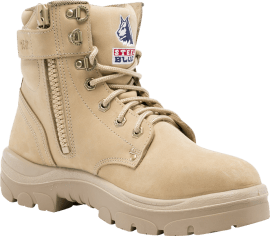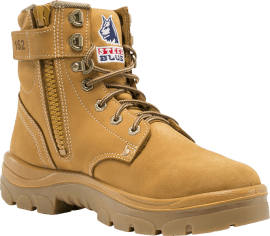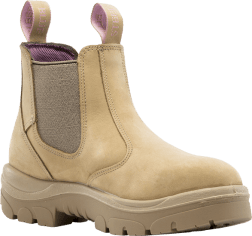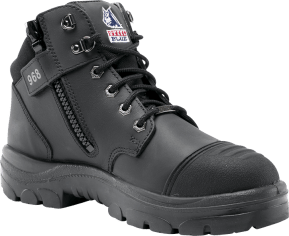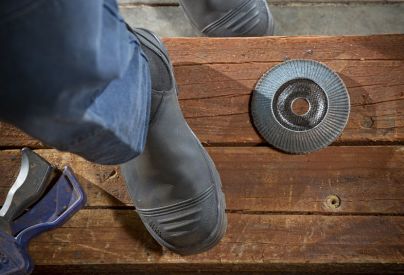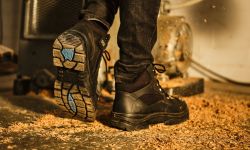How often should you buy work boots?

The lifespan of safety boots varies widely based on how and where you work, which makes it essential to know how to spot signs of wear and tear.
Investing in a good pair of comfortable work boots is a solid first step. Still, even the toughest tools wear out with hard work.
Here’s how to spot the signs of wear and tear so you can take practical steps to safeguard your health.
Wear and tear
Any of these signs could indicate that your boots are no longer fit and safe for work:
- Holes in the upper material
- Cracked soles or midsoles
- Worn-out tread patterns
- Broken eyelets
- Frayed laces
- Damaged toe caps
Neglecting the signs of wear or trying to patch up busted boots can increase your risk of slips and trips, expose your feet to hazards, and risk water damage.
The “bend test”
Safety boots should be flexible enough for you to move naturally but not so bendable that they feel like sneakers. Perform the bend test by holding the shoe in both hands and trying to curl the toe back.
Comfortable work boots should bend slightly at the ball of the foot. If yours are too bendy or rigid, it could be a sign of lack of support.
Comfort and support
If you experience pain or fatigue after a regular workday, the culprit could be worn-out work boots.
Steel Blue is committed to making the most comfortable work boots and accessories. Comfortable boots keep tradies safe, focused and productive. If you have consulted our lacing guide to adjust the fit, and found work boot insoles don’t help, it’s likely time to replace your old boots with a more supportive pair of Steel Blue boots.

Compliance
Safety boots are essential PPE. At a minimum, most tradespeople must have steel or composite toe protection before stepping onto a job site.
Although your company or manager must supply appropriate PPE, you are responsible for checking your equipment.
- Ensure steel or composite toe protection is in place and rated for the relevant impact resistance (usually 200J drop force and 15kN compression resistance)
- Inspection of wear and tear
- Check the label on supplied work boots to ensure they provide adequate protection
Specific environments also have specific hazards that warrant a little extra care.
For example, electricians wearing Electrical Hazard (EH) boots should follow the steps on our Electrical Protection page to prevent reduction or elimination of footwear’s protection and prolong the life of their PPE.
Employer recommendations
Some employers or HSE Managers may have specific guidelines for inspecting and buying work boots. Be sure to follow these guidelines. Your health, safety and livelihood are worth the five minutes it takes to ensure your footwear is fit for the task at hand.

Boot care is worth it
If you don’t want to buy new boots every few months, follow the steps in our Boot Care Guide to keep your gear comfortable and in good condition.
Wearing unsafe boots is an unnecessary risk to your health and safety, and the safety of your workmates. If you are unsure whether your boots are up to the challenge, it’s always best to err on the side of caution.
Consult your HSE Manager or a senior colleague for a second opinion, or pop into a Steel Blue authorized dealer to buy work boots that help you work hard and stay healthy.
